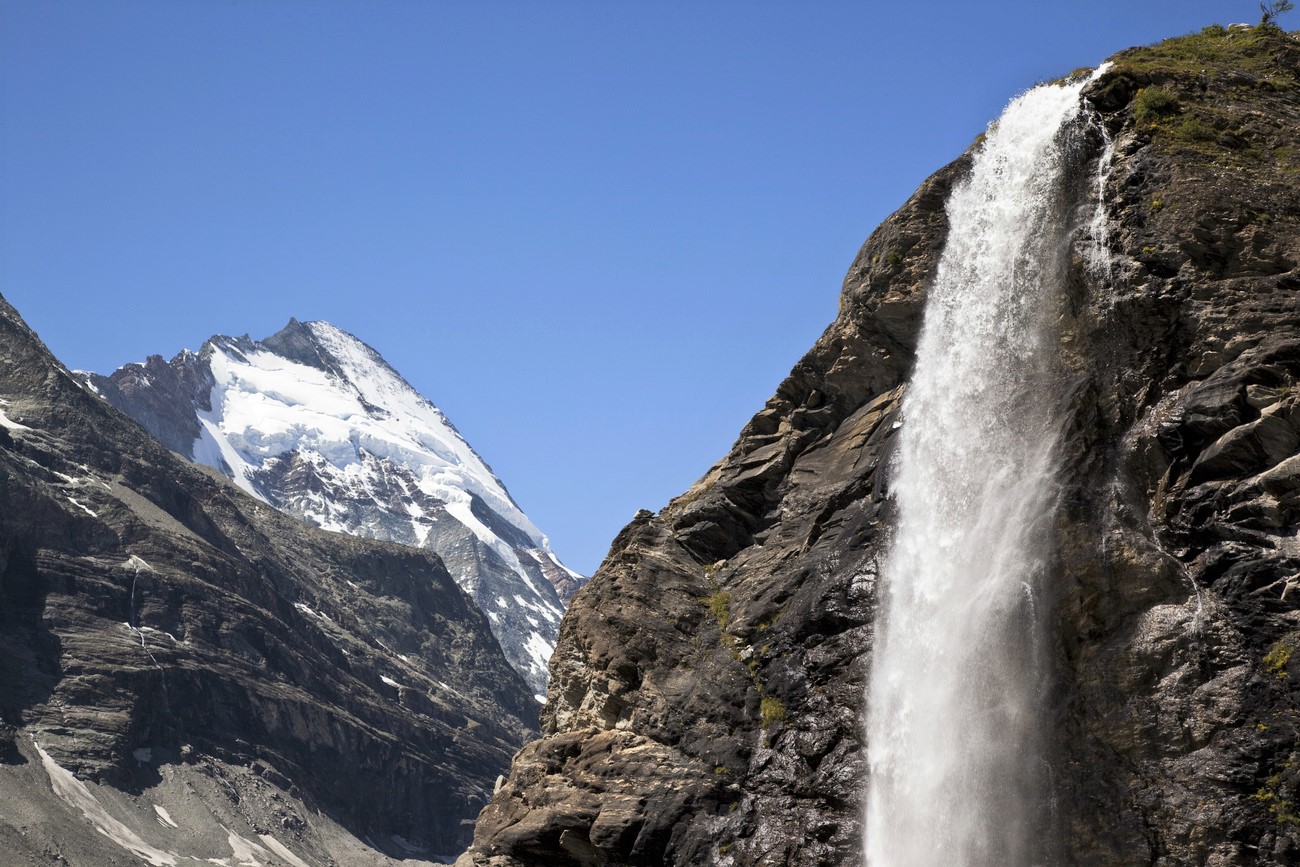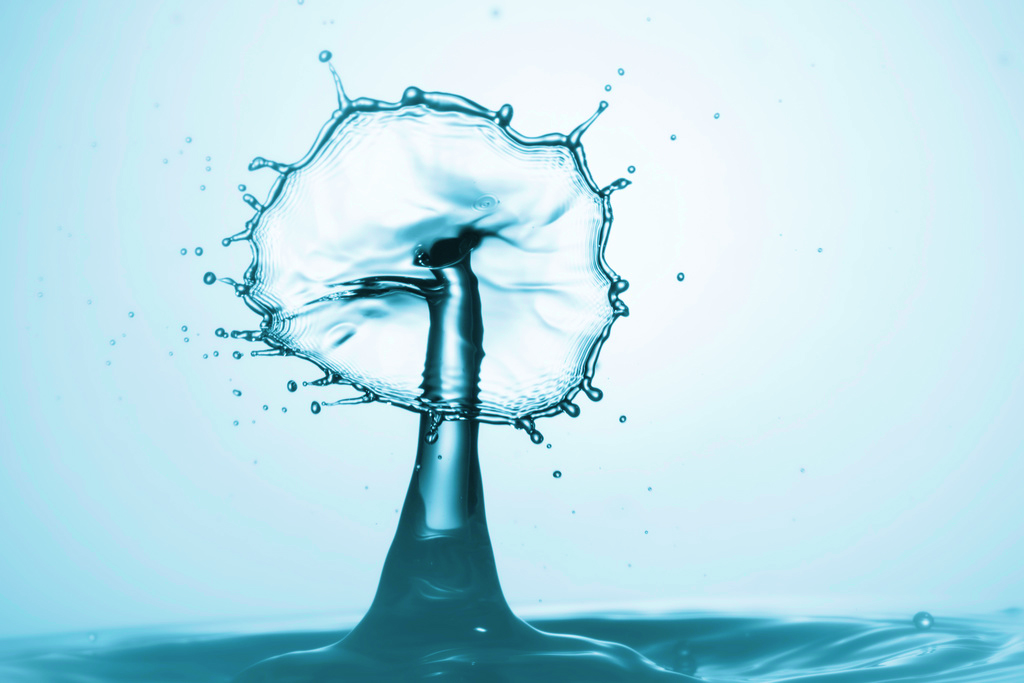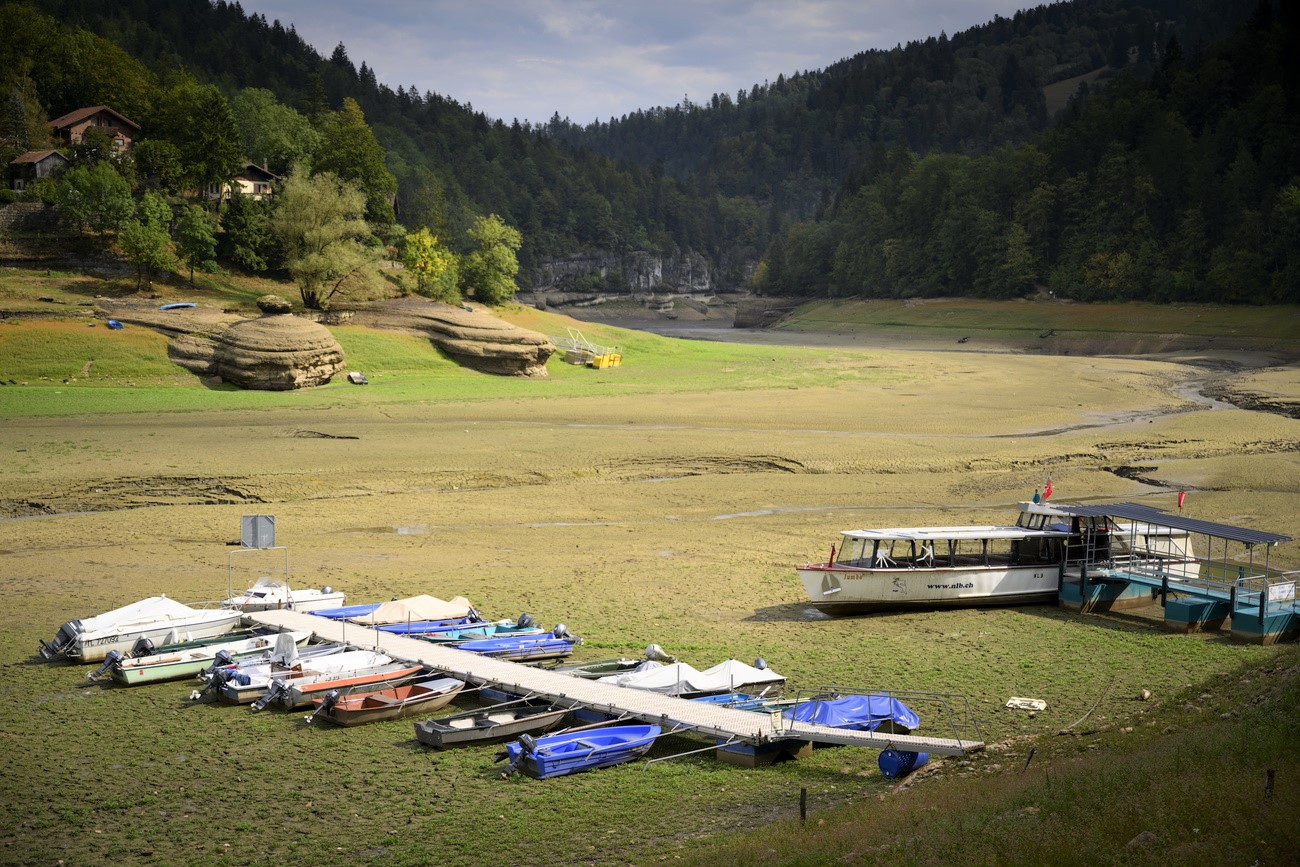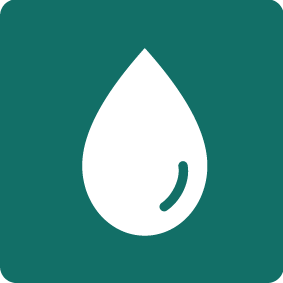
How to prevent conflicts over water in the middle of Europe

Switzerland, the source of some major European rivers, wants to retain more water for electricity production. But France and Italy also need the water that flows from the Swiss Alps. How can the different needs be reconciled?
“Am I concerned? Of course, and quite a lot!” says Kaspar Schuler. For centuries, the Alps have provided tens of millions of people in Europe with abundant water. But this vital resource will become increasingly scarce, at least at certain times, and therefore more contested.
“Everyone needs water. In the future it will be a battle,” says Schuler, president of the International Commission for the Protection of the Alps (CIPRAExternal link), an NGO dedicated to preserving the natural and cultural heritage of the Alps.
The amount of water flowing downstream from Switzerland is likely to decrease, especially in the summer. But it is during the hottest months of the year that France and Italy need this water most to irrigate their crops, while Switzerland wants to generate electricity with it. A situation that the Swiss government saysExternal link carries “a significant potential for conflict”, particularly in light of global warming. That is why it wants to reach agreements on water management with its neighbours. But can they work?
Water is becoming scarce in many parts of the world. Even Switzerland, which holds much of Europe’s water, must rethink its management and prepare for increasingly frequent droughts. This series explores potential conflicts related to water consumption and solutions for better management of the precious resource.
Swiss water in European rivers
Switzerland hosts about 6% of Europe’s freshwater reservesExternal link, some of it in the form of snow and ice. Its water flows into the Rhône, the Rhine and the Inn, a tributary of the Danube. The Po in Italy is also fed by water from the Swiss mountains.
The contribution of Swiss waters to the final flow of major European rivers varies depending on precipitation and the intensity of snow and ice melting in the Alps. The average annual share is about 1% for the Inn, 10% for the Po, 20% for the Rhône and 45% for the Rhine, according to data from the Federal Office for the Environment (FOEN).

But as glaciers shrink and snowfall in the Swiss Alps decreaseExternal links, the effects could be felt far downstream.
Between 1960 and 2020, the minimum flow rate of the Rhône at the outlet of Lake Geneva, on the French-Swiss border, fell by 7%, according to a studyExternal link published in March by the Rhône-Mediterranean and Corsica Water Resources Agency. At Beaucaire, Camargue, near the river delta, the decline was 13%.
Then, as it gets hotter, increasingly drought-prone farmland has to be irrigated. The average summer flow of the Rhône at Beaucaire could decline by an additional 20% over the next 30 years, the study predicts. This could also have an impact on navigation, ecosystems, drinking water resources and even energy production. In France, Rhône water is used by some 20 hydroelectric power plants and cools the reactors of four nuclear power plants.
More water for hydropower generation
But Switzerland also needs water for its own electricity production. Hydroelectric power plants and reservoirs, fed with rain and meltwater from the mountains, produce almost two-thirds of the country’s total electricity.
Switzerland does not want to run out of water and especially not during the winter months, when demand for electricity is highest. At the end of 2021, representatives of federal and cantonal authorities, power companies and environmental organisations agreed on 15 new hydropower projectsExternal link. The plan calls for the construction of two new dams in the Alps, including one in the Matterhorn area.
“The goal is clearly to retain more water for the winter,” says Kaspar Schuler. Large cities around the Alpine region such as Milan, Lyon or Munich will also benefit from this electricity production. However, Schuler points out that the water will also be used to irrigate crops and produce snow for the ski slopes in Switzerland.

More
Water shortage: Switzerland’s blue gold is under pressure
Drinking loo water
As the country of origin of water, Switzerland has a special responsibility for its management, Loïc Fauchon, president of the World Water CouncilExternal link, an international organisation that brings together United Nations agencies, academic institutions, governments, civil society groups, and private sector companies, tells SWI swissinfo.ch.
However, the same is also true for downstream countries, which must manage water properly. “In Europe we are used to collaboration on water issues. There may be tensions here or there, but it won’t go any further,” Fauchon says, arguing that increasing the capacity of water reserves will be crucial.
In the face of climate change and demographic growth, we will also have to consume less water, more efficiently, Fauchon says. One solution is to re-use wastewater not only to irrigate agricultural fields, as is already done, but also to supply households. A French water utility company will be experimenting with the treatment of lavatory wastewater into drinking waterExternal link in the coming months.
Reviewing international agreements
For decades, conventions and treaties have governed cooperation between the Swiss federal government and European states in the transboundary management of international water resources and lakes.

More
Why water-rich Switzerland needs to monitor droughts
These are now to be adapted and new ones to be defined in order to adapt to climate change, explains FOEN spokesperson Rebekka Reichlin in an email. Switzerland and France, for example, are working on the creation of a binational commission for the management of the Rhône.
Bern is also reviewing with Italy the agreement on regulating the levels of Lake Maggiore that has been in place since the 1940s. This agreement is periodically the focus of controversy and a source of tension between the two countries. In June 2022 the Lombardy region of Italy asked Swiss federal and cantonal authorities to allow more water to flow into Lake Maggiore, and consequently into the Ticino and Po rivers to help the agricultural sector, which had been brought to its knees by the drought. The request was not granted due to a lack of water reserves even in reservoirs of canton Ticino.
What happened last year between Switzerland and Italy should be a warning, Schuler says. “Collaboration is not working at its best.”
Transboundary water management must be prioritised, according to Schuler, who calls for more international conferences on the issue, the establishment of working groups and high-level diplomatic talks. “Water management cannot be limited to national borders. It must encompass the entire water system, from source to delta.
Edited by Sabrina Weiss
More

In compliance with the JTI standards
More: SWI swissinfo.ch certified by the Journalism Trust Initiative
















![The four-metre-long painting "Sonntag der Bergbauern" [Sunday of the Mountain Farmers, 1923-24/26] had to be removed by a crane from the German Chancellery in Berlin for the exhibition in Bern.](https://www.swissinfo.ch/content/wp-content/uploads/sites/13/2025/12/01_Pressebild_KirchnerxKirchner.jpg?ver=917ecbf2)
















You can find an overview of ongoing debates with our journalists here . Please join us!
If you want to start a conversation about a topic raised in this article or want to report factual errors, email us at english@swissinfo.ch.